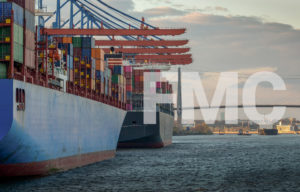News & Insights
USTR Set to Announce Process for Requesting Exclusions from Section 301 Tariffs
On July 6, 2018, the Office of the U.S. Trade Representative (“USTR”) issued a press release on its website and an advanced copy of the Federal Register Notice that will detail the new process for requesting exclusions from the additional Section 301 tariffs assessed on certain products from China. The Federal Register is expected to be published sometime during the week of July 9th. Based on the USTR’s press release, each request will need to identify a particular product, provide supporting data and describe the rationale for the requested exclusion. Companies seeking exclusions for two or more products must submit a separate request for each product–that is, only one product per request will be allowed. The USTR will evaluate each request on a case-by-case basis taking into account whether the exclusion would undermine the objective of the Section 301 investigation. Approved exclusions will be applied retroactively, starting from July 6, 2018, and will extend for one year after the publication of the exclusion in the Federal Register.
By way of background, the USTR investigated China’s practice of requiring U.S. companies to transfer their intellectual property rights (“IPR”) and technologies to Chinese companies in order to obtain business licenses and approval to invest in China. The USTR determined that China’s practices were unreasonable, discriminatory and restrict U.S. commerce. Therefore, on June 20, 2018, the USTR announced the imposition of an additional ad valorem duty rate of 25% on certain products from China. Covered products are classified in 818 subheadings in the Harmonized Tariff Schedule of the United States (“HTSUS”) and are identified in Annex A to the USTR’s June 20th Federal Register notice. The duties took effect on July 6, 2018.
Section 301 Product Exclusion Request Process – What We Know Now
Per the USTR’s press release and advanced copy of the anticipated Federal Register notice, the process will require all Section 301 exclusion requests to be submitted to the USTR on or before October 9, 2018. Interested parties may respond to requests for exclusion and must be submitted 14 days after the initial exclusion request has been posted in docket number “USTR-2018-0025” through the Federal e-Rulemaking Portal at: https://www.regulations.gov. Replies to responses to an exclusion request are due within 7 days after the close of the 14-day response period.
Information That Will Be Required for Product Exclusion Request
Requests for exclusion must include the following information:
- Identification of the product in terms of the physical characteristics (e.g., dimensions, material composition, or other characteristics) that distinguish it from other products within the covered 8-digit HTSUS subheading—note that the USTR will not consider requests that identify the product: (a) by the identity of the producer, importer, ultimate consumer, actual use or chief use, or trademarks or tradenames; or, (b) by using criteria that cannot be made available to the public.
- The 10-digit HTSUS subheading applicable to the product.
- Information on the ability of U.S. Customs and Border Protection to administer the exclusion.
- The annual quantity and value of the Chinese-origin product that the requester purchased in each of the last three years—if precise annual quantity and value information are not available, then the requester should provide an estimate and explain the basis for the estimation.
- Whether the particular product is available only from China, whether the product and/or a comparable product is available from sources in the United States and/or in third countries, and whether the imposition of additional duties would cause severe economic harm to the requester or other U.S. interests.
- Whether the particular product is strategically important or related to “Made in China 2025” or other Chinese industrial programs.
- Any other information or data that is considered relevant to an evaluation of the request.
- A statement that the submitter certifies that the information provided is complete and correct to the best of his or her knowledge.
The Mechanics of Submitting Product Exclusion Requests
All submissions must be in English and sent electronically via https://www.regulations.gov. The USTR will provide a request form that will be posted on the USTR website under ‘‘Enforcement/Section 301 investigations’’ as well as on the https://www.regulations.gov docket in the “Supporting Documents” section. USTR strongly encourages the use of the form to submit requests; however, use of the form is not required.
File names for requests for exclusions should include the 10-digit HTSUS subheading of the product and the name of the person or entity submitting the request.
If the request includes business confidential information, then two files must be submitted – a business confidential version and a pubic version. The file name of the business confidential version should end with the characters “BC.” Any page containing business confidential information must be clearly marked “BUSINESS CONFIDENTIAL” on the top of that page and the submission should indicate (i.e., via brackets, highlighting, or other means) the specific information that is business confidential. The file name of the public version should end with the character “P.” If the request includes business confidential information, a written certification will be required stating that disclosure of the information would endanger trade secrets or profitability, and that the information would not customarily be released to the public.
If the requester chooses not to use the USTR’s preferred form, then the request may be submitted in searchable Adobe Acrobat (.pdf) or Microsoft Word (.doc) formats.
If supporting documents will be uploaded with a request that uses the USTR’s form, then “see attached” should be inserted into the comment field.
Separate cover letters for electronic submissions should not be used; rather, the USTR prefers that any information that might be provided in a cover letter be inserted into the comments themselves.
Any additional exhibits, annexes or attachments should be included in the same file as the comment itself—they should not be submitted as separate files.
If you have any questions or need further information as to the applicability of the Section 301 tariffs to your products, the product exclusion process or other international trade-related issues, please contact Miller Proctor Law PLLC (Melissa Proctor – melissa@millerproctorlaw.com).
News & Insights

New Developments in the Section 232 Tariffs on Imports of Steel and Aluminum Products
The last two weeks ushered in several significant developments relating to the increased tariffs under Section 232 on certain steel and aluminum products. U.S. importers and manufacturers of affected products, raw materials, parts and components should take note of the

Federal Maritime Commission’s Proposed Rules and Direct Final Rule Will Have Significant Impact on Carriers and Forwarders
At its meeting on September 26, 2019, the Federal Maritime Commission (“FMC”) issued two proposed rules and a Request for Comments on a Direct Final Rule that may significantly affect ocean transportation intermediaries (“OTIs”), such as vessel operating common carriers


